I used a thermal camera to see if the iPhone 15 overheats or not — here's what I found
Several factors come into play with iPhone 15 overheating

Apple’s no stranger when it comes to controversy. Each new iPhone release is accompanied by its own set of challenges, but this latest one is literally turning up the heat. Since the iPhone 15 arrived in stores last week, reports have surfaced from some newly minted owners and tech reviewers about the iPhone 15 overheating, leading everyone to speculate the cause.
Fingers were pointed at the titanium alloy frame in the iPhone 15 Pro models as well as the A17 Pro chip that powers Apple's most expensive iPhones. But the overheating issue also spilled into the standard iPhone 15 series. Whether it’s a single thing — the USB-C port has also been cited as a potential culprit — or a combination of stuff, an overheating iPhone is the last thing anyone wants to deal with, especially so soon after release.
Apple analyst Ming-Chi Kuo believes the issue stems from compromises made to the thermal design system in the phones. However, he attributed it to the iPhone 15 Pro series and not the standard models. I decided to check for myself with the help of a handy infrared camera to discover hotspots on the iPhone 15.
iPhone 15 overheating: is charging via USB-C the cause?

First of all, I wanted to see if charging your iPhone 15 via USB-C would cause its surface temperature to rise to an unfavorable level. Obviously, my sense of what’s considered hot is different from yours, but Tom’s Guide rates anything above 95°F as uncomfortable.
Knowing that, I started to charge both an iPhone 15 and iPhone 15 Pro Max via USB-C with a 30W adapter I had on me, checking their temperatures every 5 minutes. At the start of charging, I measured a peak surface temperature of 82.7°F with the iPhone 15 while the iPhone 15 Pro Max measured in at 80.6°F. After 30 minutes of charging, their surface temperatures reached 84.4°F and 88.3°F respectively.
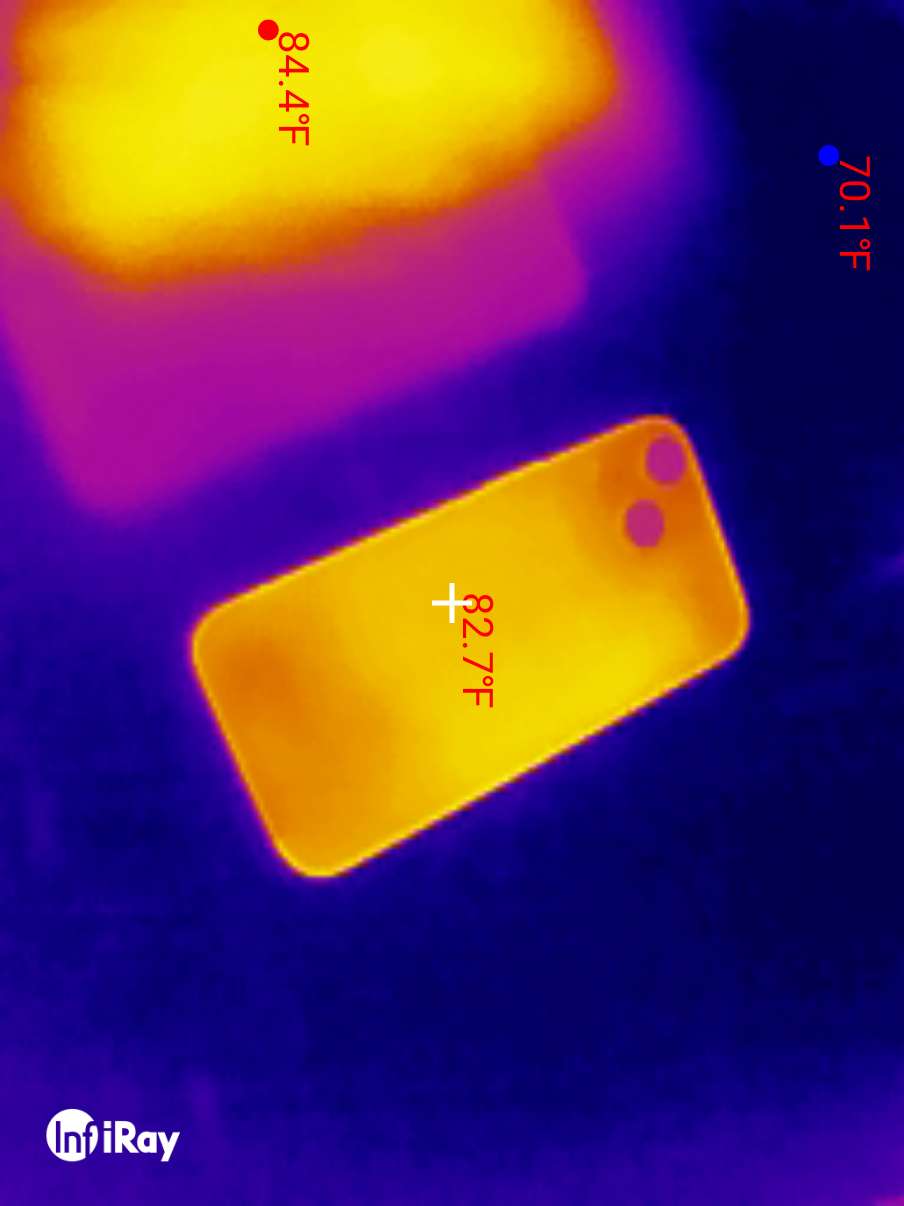

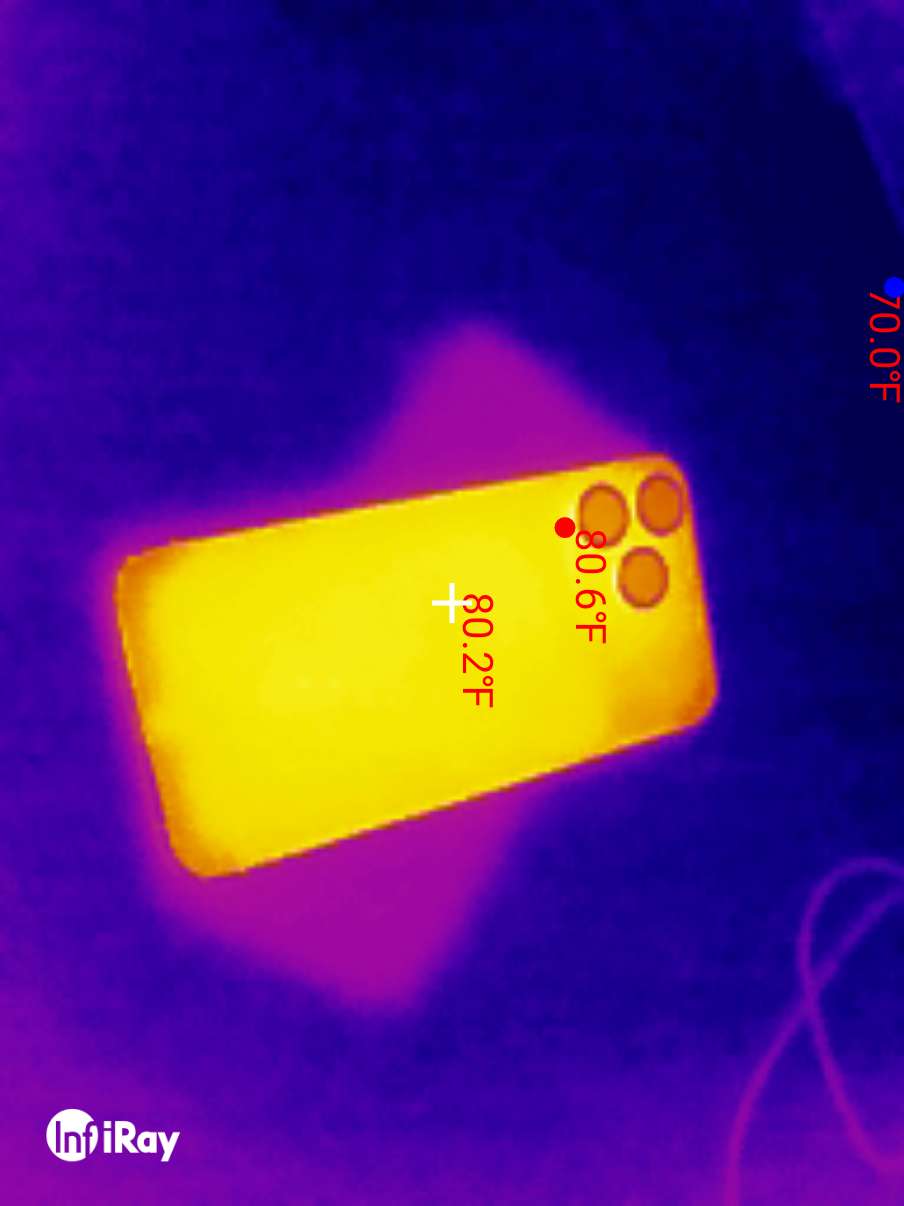

I didn’t think they felt uncomfortably hot to hold, so I would naturally think of these temperatures as normal. Looking through the thermal images I captured of both iPhones, it seems the edges of the phones were the hottest parts.
Meanwhile, I also decided to put the Samsung Galaxy S23 Ultra through the same routine. It started off with a surface temperature of 83.6°F, ending at a slightly toastier 90.7°F. Again, I didn’t think Samsung's phone felt hot to the touch. During its 30 minute charge, however, I did record a peak surface temperature of 92.4°F — with the center of the phone being its hotspot.
Get instant access to breaking news, the hottest reviews, great deals and helpful tips.

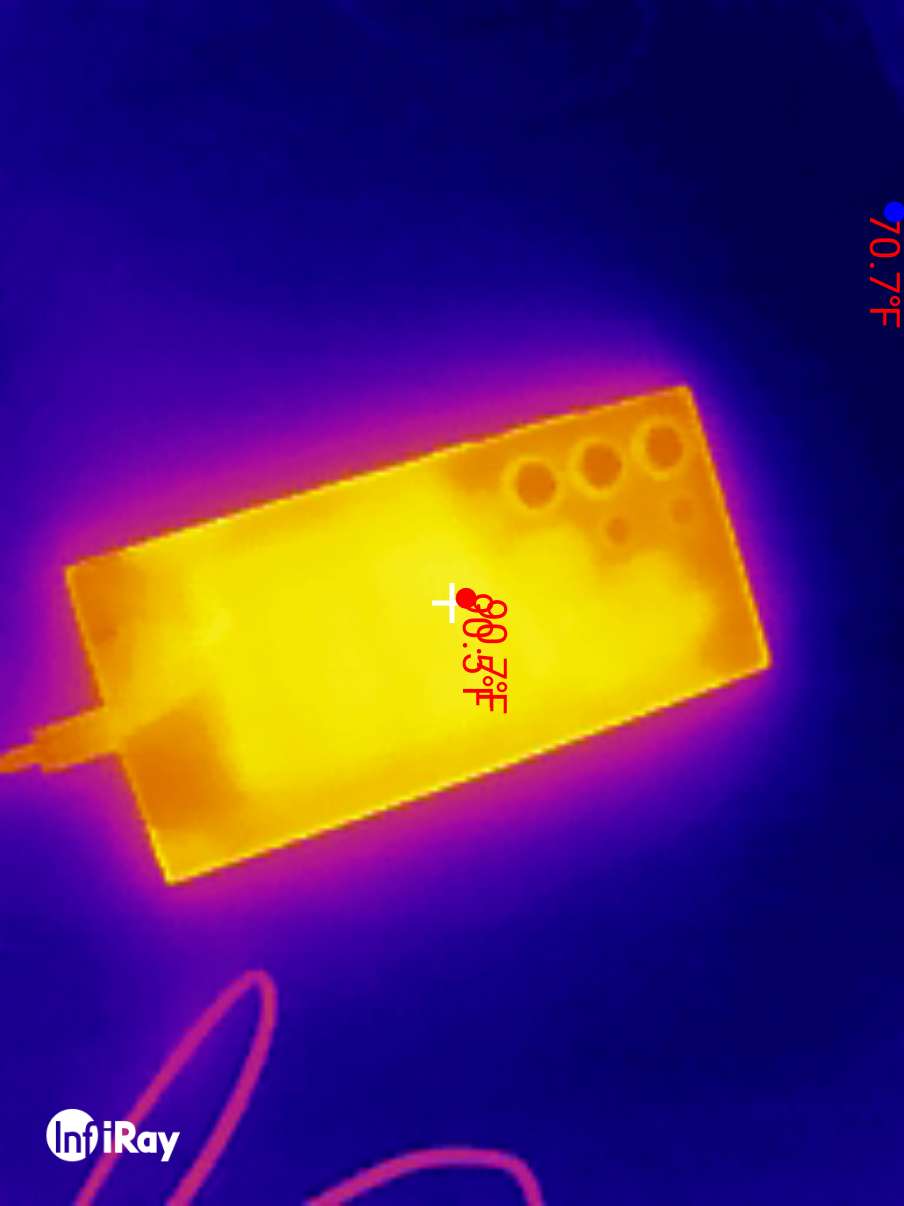
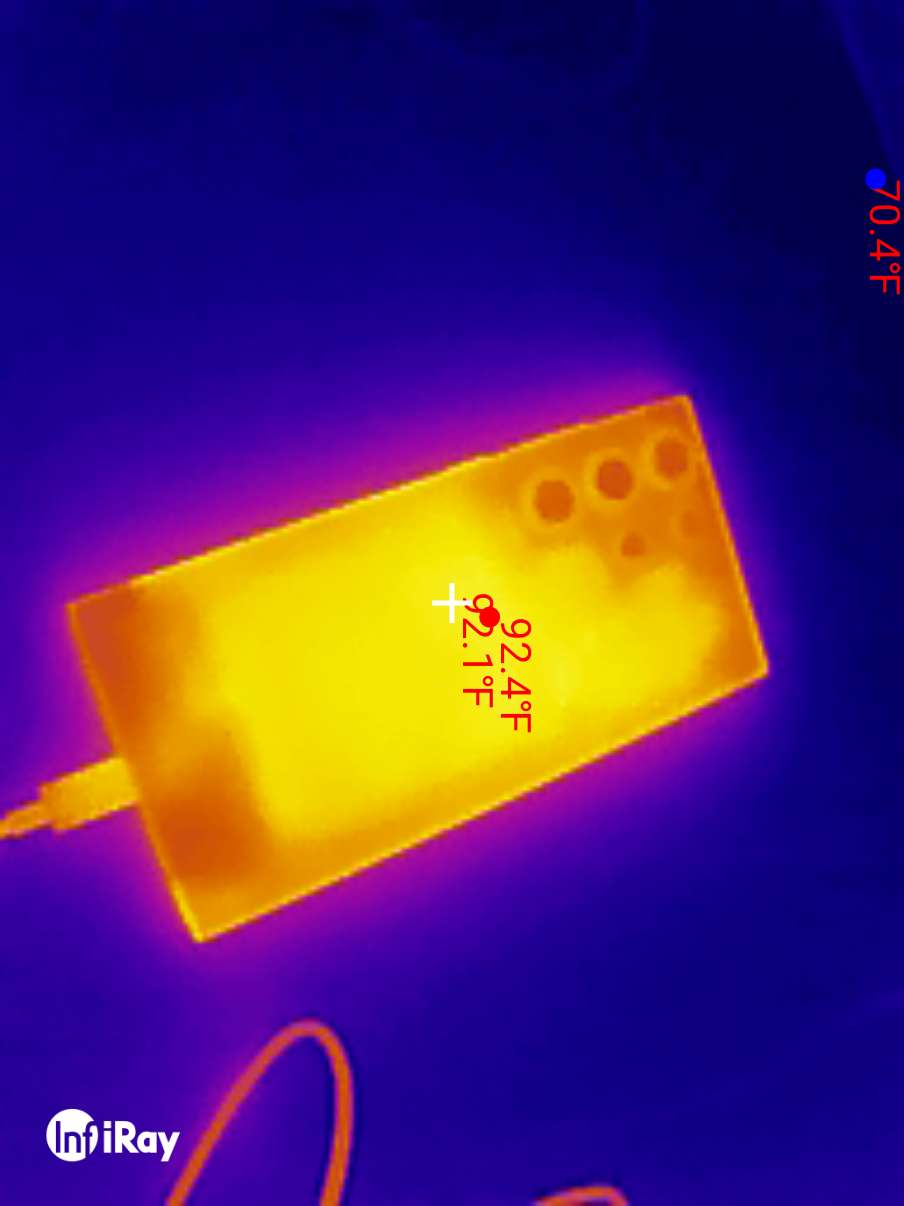
iPhone 15 overheating — does gaming cause overheating?

After charging the phones via USB-C, I decided to play Modern Combat 5 on both the iPhone 15 Pro Max and Galaxy S23 Ultra for 15 minutes each to see any substantial changes. Based on my testing, there's clearly a rise in temperature.
At the onset, the iPhone 15 Pro Max clocked in with surface temperatures of 88.3°F squarely on the middle back of the phone — while the edge closest to the Action button and volume controls measured at 92.2°F. After playing for 15 minutes, the same areas increased to 91.6°F and 94.7°F, respectively.
I found the same results with the Galaxy S23 Ultra. The surface temperature at the middle and edge of the phone measured in at 81.9°F and 86.3°F, which ended up at 85°F and 86.1°F, respectively.
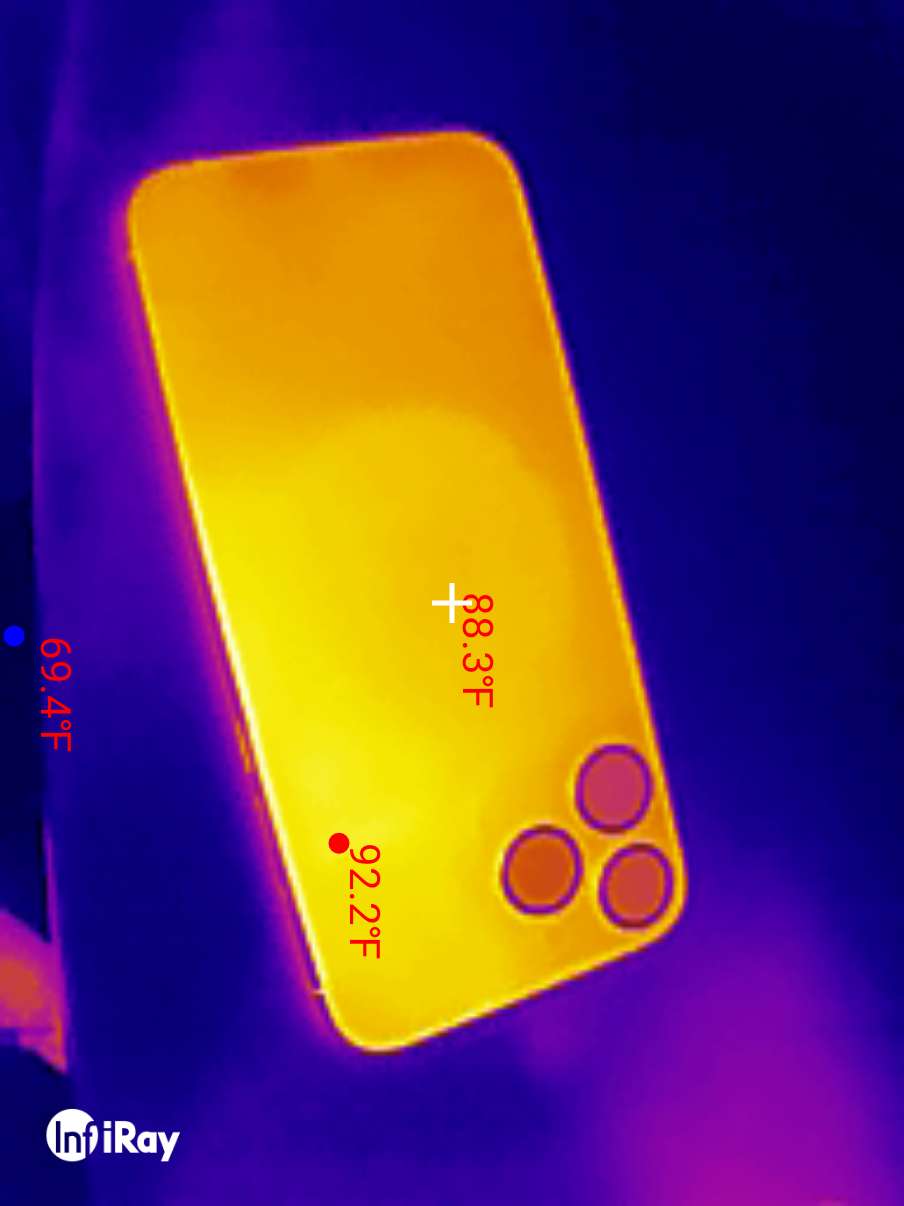
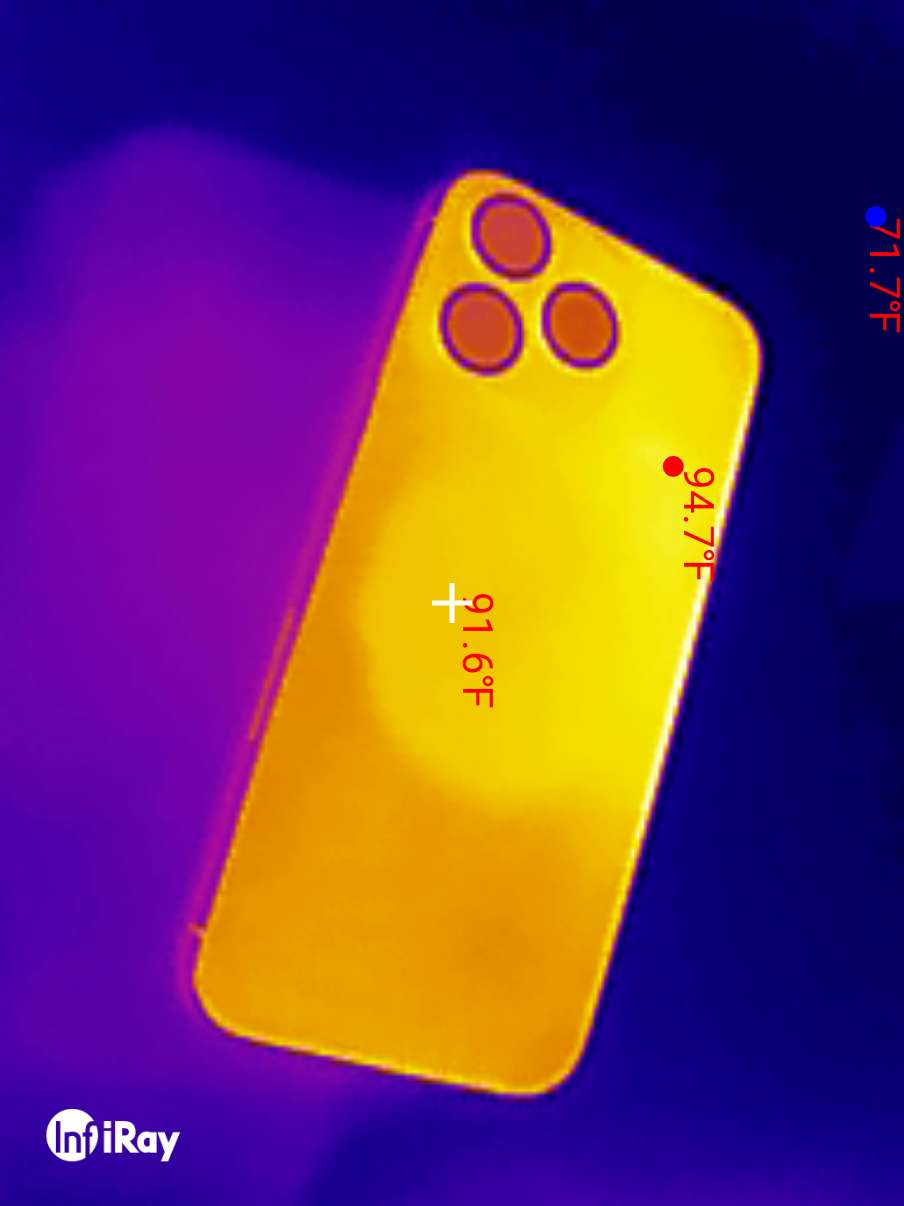
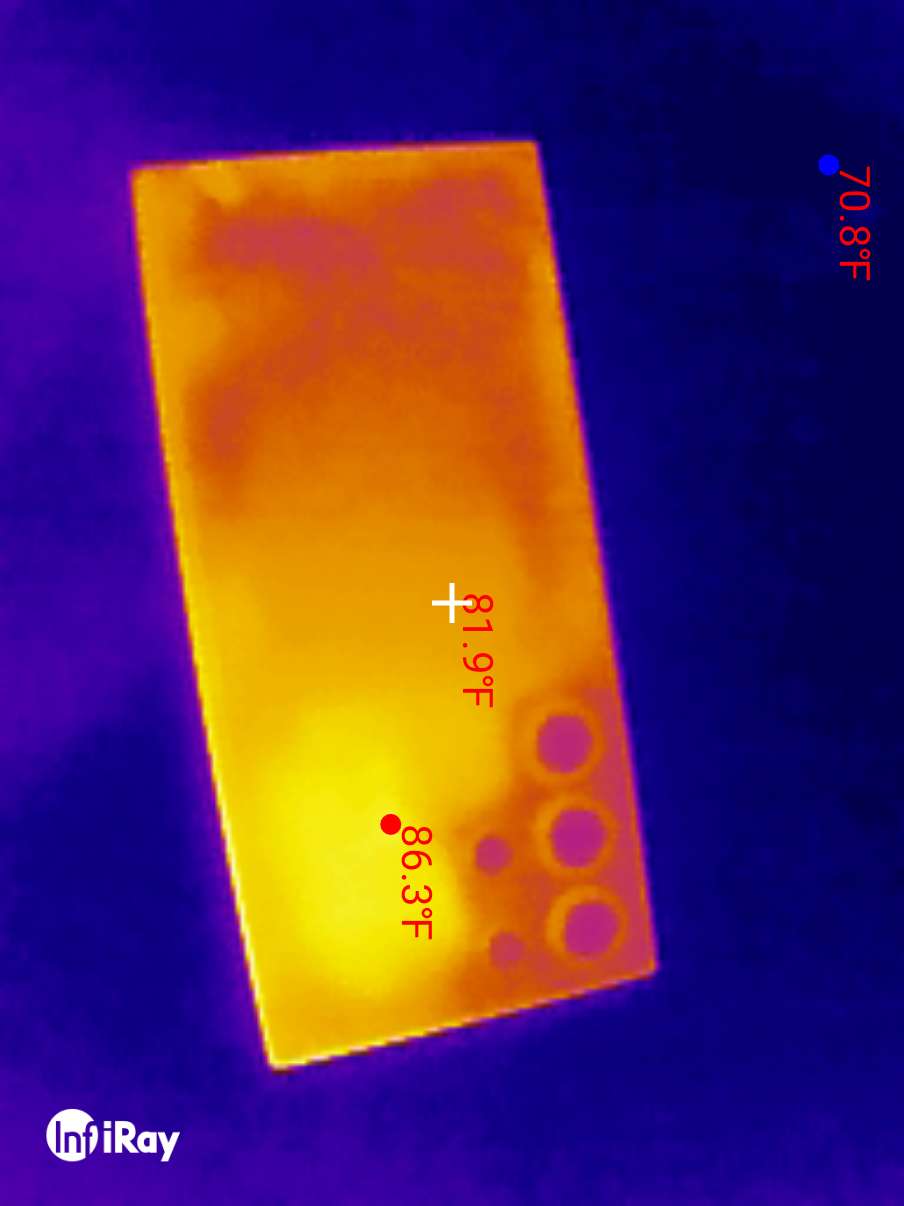
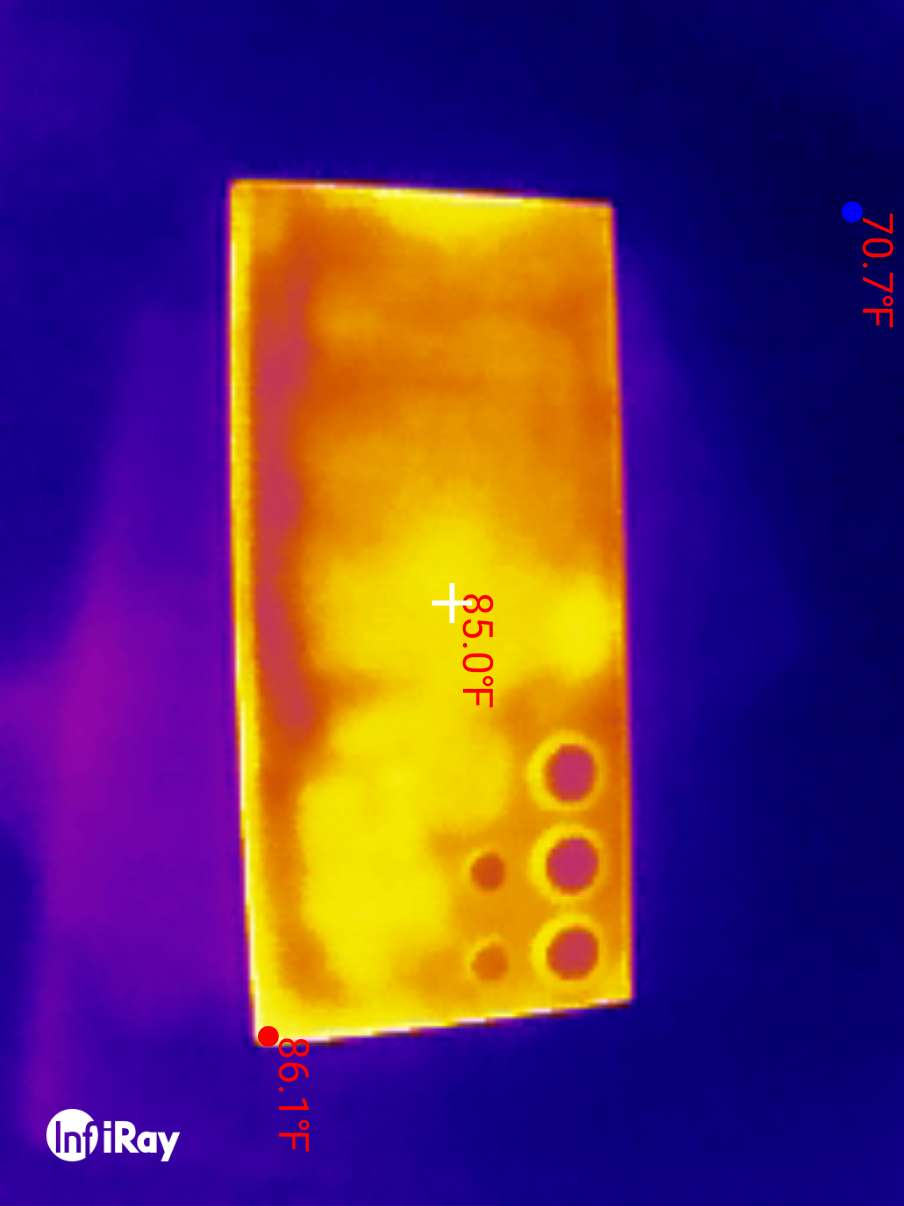
Even though our measurements showed that there was a rise in surface temperature while gaming, neither phone managed to eclipse that mark of 95°F for overheating.
When the iPhone 15 Pro Max reached 104.1°F
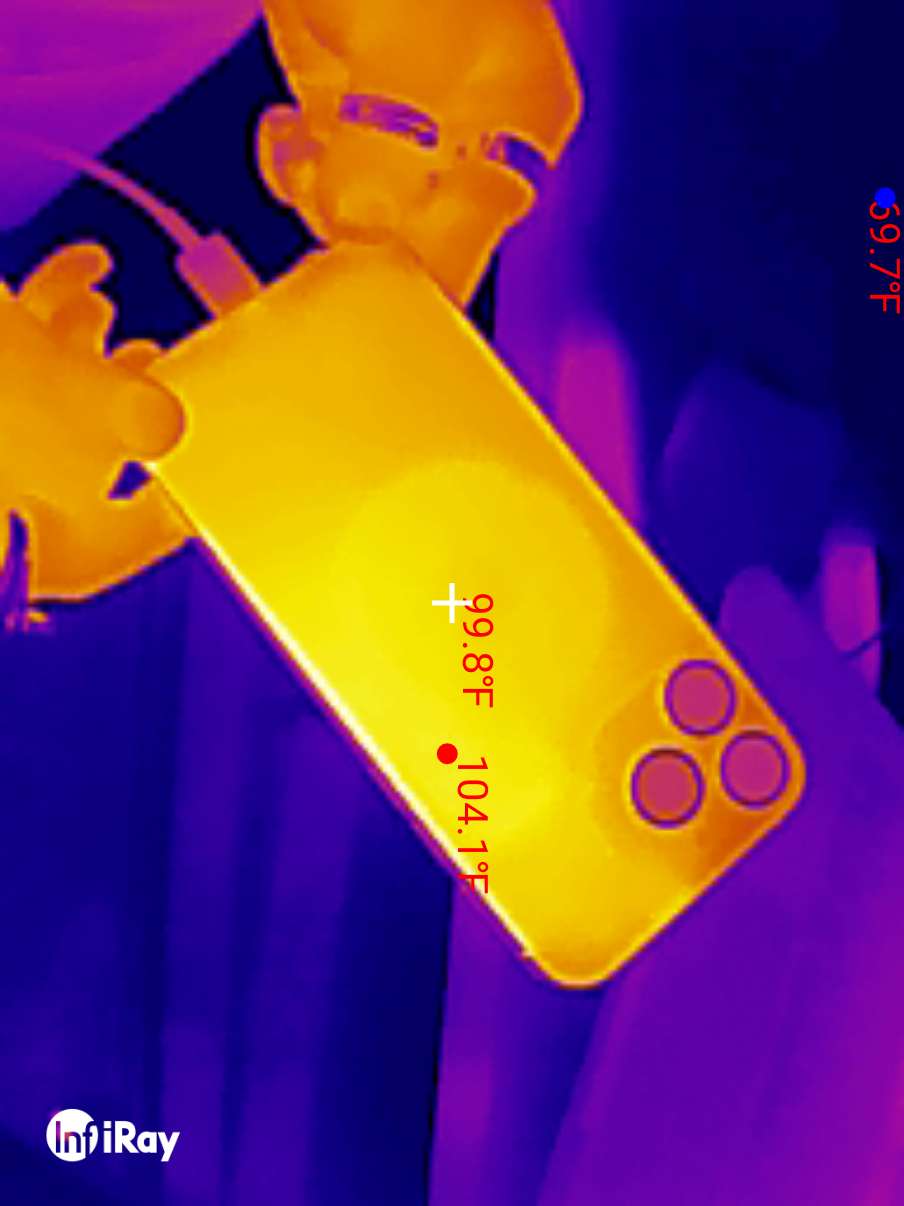
While I was running these tests, my colleague Kate Kozuch overheard my early verdict that I didn’t think that any of the phones were technically overheating. That’s until she turned around and said her iPhone 15 Pro Max was really hot.
I quickly pointed my infrared camera on her phone and was shocked by the reading. It showed the back-middle of the iPhone at a blistering 99.8°F, but it was an even hotter 104.1°F rating along the edge nearest to the Action button and volume controls. Needless to say I was dumbfounded by these results after my own testing barely got close to 95°F.
Not only was she actively charging her iPhone 15 Pro Max via USB-C, but she told me she was also scrolling through several Reels and watching them. I didn’t think that such a mundane act would prove to be demanding and generating a lot of heat, but I suspect that there’s more to it than just that.
In fact, I suspect that her iPhone 15 Pro Max is juggling a lot more background processes and services than the ones I was testing. That’s because she transferred all of the data from her old iPhone, whereas there was barely any on the iPhone 15 and 15 Pro Max I was testing. I think of it much like a new computer versus one you’ve owned for years. One’s a fresh install that runs buttery smooth, while the other can sometimes feel bogged down running different apps.
Frankly, I’ve felt my year-old iPhone 14 Pro Max feeling hotter than normal doing the same thing browsing through Instagram Reels. I’ve never had the inclination to record its surface temperature, but I wouldn’t be surprised if it were close to Kate’s iPhone 15 Pro Max.
In any event, it could boil down to how hard the A17 Pro is working — or perhaps the compromised thermal design system that Kuo pointed out. There’s already a robust discussion thread on Apple’s site from users sharing their iPhone 15 overheating issues, so I’m curious to see if Apple ends up doing something to address this issue.
More from Tom's Guide
- iPhone 16 may not get the A17 Pro chip from iPhone 15 Pro — here’s why
- 7 ways Google Pixel 8 Pro could beat iPhone 15 Pro Max
- iPhone 15 battery life tested — here's how long all four models last

John’s a senior editor covering phones for Tom’s Guide. He’s no stranger in this area having covered mobile phones and gadgets since 2008 when he started his career. On top of his editor duties, he’s a seasoned videographer being in front and behind the camera producing YouTube videos. Previously, he held editor roles with PhoneArena, Android Authority, Digital Trends, and SPY. Outside of tech, he enjoys producing mini documentaries and fun social clips for small businesses, enjoying the beach life at the Jersey Shore, and recently becoming a first time homeowner.
